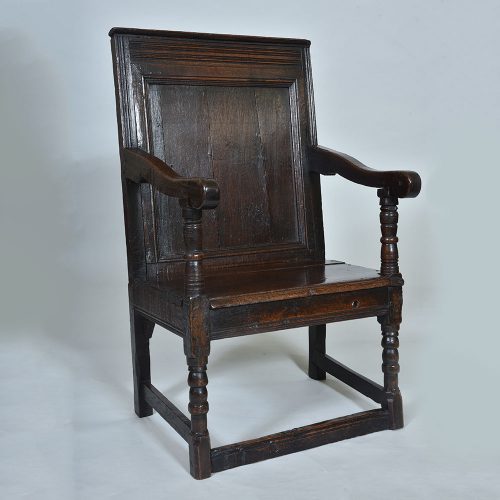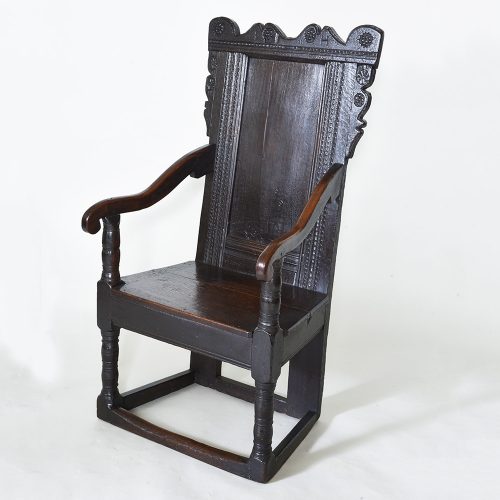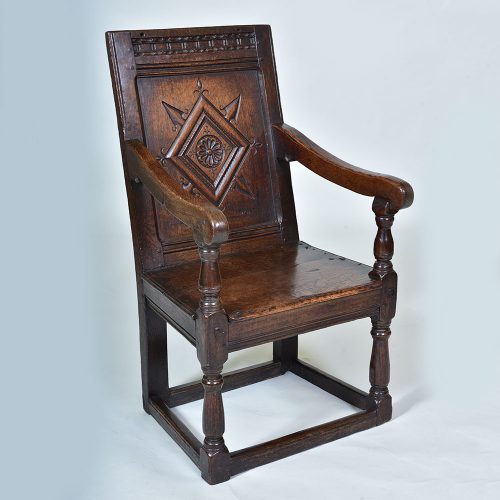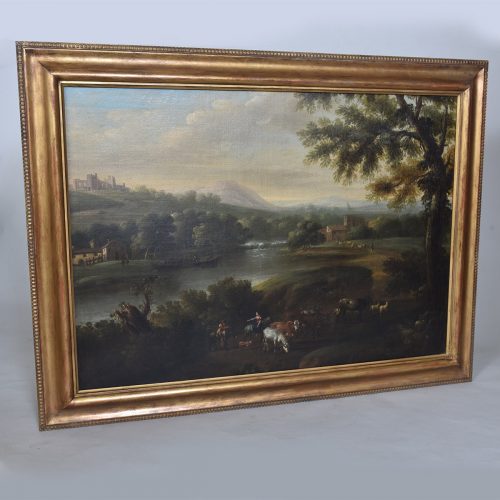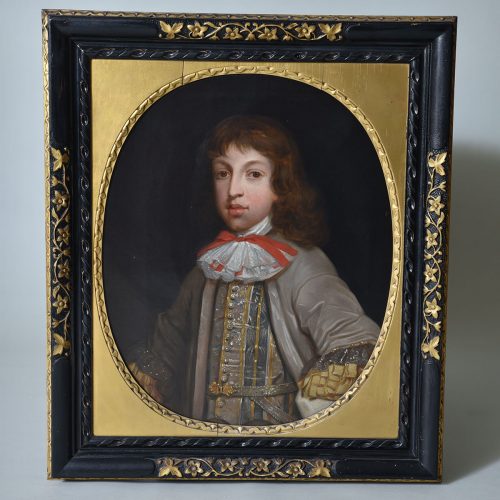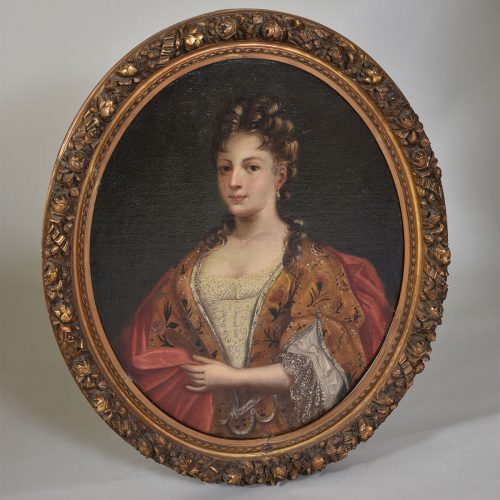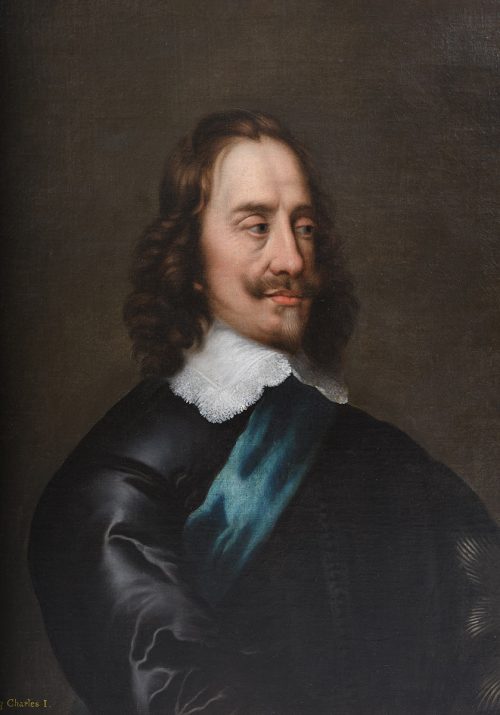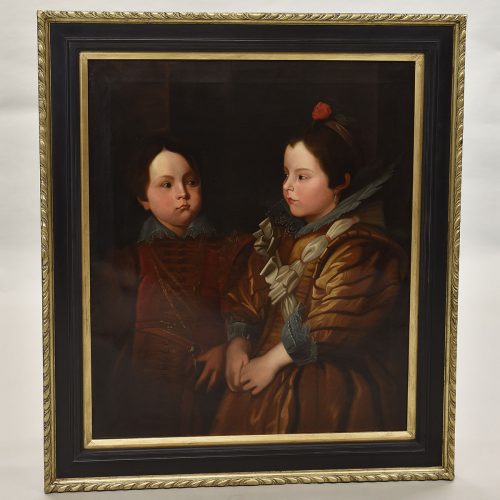Shop
-
SOLD17th century Oak Wainscot Armchair Width: 23.5" / 60 cm Depth: 21" / 53 cm Height: 40" / 102 cm
-
SOLD17th century Oak Wainscot Chair Width: 24" / 61 cms Depth: 23" / 58 cms Height: 45" / 114 cms
-
SOLD
17th century Oak Wainscot Chair
£2,200.0017th century Oak wainscot chair with carved back panel. Gloucestershire. Circa 1670 Width: 21" / 54 cms Depth: 21" / 54 cms Height: 38" / 97 cms -
SOLD
17th century Oak Wainscot Chair
£2,200.0017th century Oak Wainscot Chair - circa 1660 Width: 22.5" / 57 cms Depth: 21" / 53 cms Height: 41.5" / 106 cms -
SOLD17th century Oak Wall Cupboard. A glass or food/dole cupboard. Circa 1660. Width: 36.5" / 92 cms Depth: 9" / 23 cms Height: 34" / 86 cms
-
SOLD17th century Oil on Canvas - Dutch School - Follower of Jan Both - (1615-1652) - Italianate Landscape Width: Framed Size - 49.5" / 126 cms Height: 37.5" / 95 cms
-
17th century Portrait
£2,850.00Portrait of Charles Howard of Greystoke Castle Oil on Canvas in Ebonised and Giltwood Frame Charles Howard (1630-1713) of Greystoke Castle, Cumbria. Painted here as a boy. Charles was the fourth son of Henry Frederick Howard, 15th Earl of Arundel and Elizabeth Stuart. Although it was his father’s wish that he would inherit the title, Duke of Norfolk, his brother Henry obstructed this. Charles sued Henry through the House of Lords but the case was not resolved in his lifetime. Width: 30" / 76 cms Height: 36" / 92 cms -
SOLD
17th century Portrait
£3,250.0017th century oil on canvas of a French Noblewoman (possibly Madame de Cavalliere). Ornate hand carved and gilded oval frame Circle of Pierre Mignard (1612-1695) Mignard was one of the most successful artists in 17th century France, being commissioned by Louis XIV, who gave him the opportunity to paint many of the court figures. Framed Width: 32" / 82 cms Framed Height: 38" / 97 cms -
17th century Portrait of a Gentleman
£2,950.0017th century Portrait of a Gentleman. Oil on Canvas. Carved and Gilded Frame. School of Kneller (1646-1723) On the reverse, said to be of John Verney, (1652-1707), MP for Leicestershire. 1st son of Sir Richard Verney of Compton Verney, Warwickshire. Brother of George Verney, who became Lord Willoughby de Broke in 1711 and later Dean of Windsor. Width: 32" / 81 cms Height: 37" / 94 cms -
SOLDLate 17th/Early 18th century Portrait of a Lady. Oil on canvas in a carved and gilded frame. Possibly Lady Mary, Countess Panmure, (1676-1742). She married Henry 'Earl of Panmure' Maule on March 30th 1695. Width: 33" / 84 cms Height: 37.5" / 94 cms
-
Portrait of King Charles I - Oil on Canvas - Circle of Sir Peter Lely - 1618-1680- Titled Lower Left - King Charles I - this derives from Lely's double portrait of Charles I and The Duke of York in the collection of the Duke of Northumberland Framed Size: Width: 34" / 86 cms Height: 39" / 100 cms
-
17th century Portrait of Children
£2,500.0018th century portrait of the younger children of Giacomo Lomellini, Doge of Genoa 1625-1627 - After Van Dyke The original version of this painting by Van Dyke of the family hangs in the National Gallery of Scotland and is considered as being one of his finest works. Doge Lomellini was famous for implementing a famous defence project of the capital of Genoa - a substantial city wall from the San Benigno hill at the mouth of the Bisagno stream, a work that was the basis of the "New Walls". In December, 1626 the doge laid the foundation stone and in the following years there were many donations from individuals, corporations, and the arts, to which were added the new taxes specifically designed to support the walls’ construction, paid for by the middle and less wealthy classes. The amount collected, approximately 2,100,000 Genoese pounds, did not serve to cover the entire construction, but was the basis for starting the works. His term as Doge ended on 25 June 1627, and Lomellini was elected from January 1628 to 1630 as head of the war magistrate. In 1634 he was in the office of the magistrate of Corsica and in 1637, and again in 1644, he led the commission of the State Inquisitor of the Republic of Genoa. In 1645 and until his death he took part in the direction of the restoration and modification of the Doge's Palace. Lomellini died in Genoa on April 1, 1652. Anthony Van Dyke (1599-1641) – Born in Antwerp to prosperous parents. Antoon van Dyck’s talent was evident and he became an independent painter around 1615, setting up a workshop with Jan Breugel the Younger. Within a few years he became the chief assistant to Peter Rubens, the dominant master painted of the whole of Northern Europe. He lived a good part of his early life in Genoa, although he moved to London to be granted citizenship by Charles I who commissioned Van Dyck to paint several portraits. The portrait of Charles I in three positions (1635-36) is one of the most famous images. Width: 33" / 84 cms framed size Height: 39" / 97 cms


